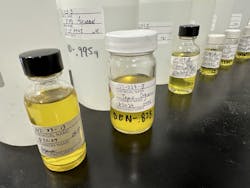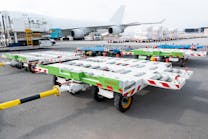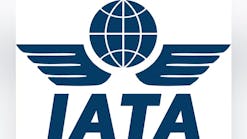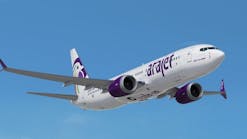Universal Fuel Technologies (Unifuel) has completed a successful five-month pilot project to support Sustainable Aviation Fuel (SAF) production goals and increase feedstock availability.
The campaign demonstrated the effectiveness and viability of the company’s Flexiforming technology in producing SAF that is chemically comparable to conventional jet fuel from various renewable feedstocks. The project was conducted at the facilities of RPD Technologies in Crosby, Texas, from August through December of last year. It produced nearly 100 liters of SAF sample material under stable process conditions, signaling readiness for the technology to scale up.
The campaign focused on converting methanol and ethanol to SAF and ethanol with paraffinic renewable naphtha made via Hydroprocessed Esters and Fatty Acids (HEFA) to aromatic SAF. Samples of Unifuel’s Flexiforming SAF have been thoroughly tested and are now being analyzed at Washington State University’s Bioproducts, Sciences, and Engineering Lab for Tier 0 screening—the initial step of the SAF certification process.
The pilot yielded two distinct forms of SAF: Synthetic Aromatic Kerosene (SAK), an essential aromatic blend component for maintaining compatibility of paraffinic SAF with the composition of fossil kerosene, and a potentially 100% drop-in, fully synthetic SAF that contains the correct aromatic content for commercial use, pending certification by ASTM International, the leading global technical standards organization.
As a result, the aromatic component of SAF produced through Flexiforming, made from HEFA and Fischer-Tropsch (FT) naphtha, can be blended with the primary paraffinic SAF stream from these units. This creates the opportunity to produce drop-in SAF directly at HEFA and FT plantsunits, reducing the costs and complexity of the logistics and aiding in industry adoption.
“The impact of this pilot project reaches far beyond technical validation,” said Alexei Beltyukov, CEO of Universal Fuel Technologies. “A considerable value of Flexiforming is that it contributes to making SAF fully interchangeable with fossil jet fuel once ASTM approved.
Because of its aromatic properties, which are essential for compatibility with today’s aircraft, Unifuel’s SAK, once approved by ASTM, can be blended with paraffinic SAF from HEFA or FT and sold directly to airlines without the need for blending with another fuel. As the aviation industry faces increasing pressure to reduce its environmental impact and contain costs, technologies like Flexiforming could be crucial in scaling up sustainable aviation fuel production to keep pace with demand.”
Flexiforming provides several options for SAF production, making it especially adaptable for various renewable fuel scenarios. The pilot campaign validated ethanol-to-jet (ETJ), methanol-to-jet (MTJ), and renewable naphtha-with-ethanol-to-jet (NETJ) production routes, offering flexibility in feedstock selection. Due to the technology’s substantially lower energy and hydrogen requirements, Unifuel estimates Flexiforming to be half the cost of current ETJ processes.
GSW spoke to Beltyukov about the specifics of this development and what it could mean to the advancement and wide acceptance of SAF.
GSW: What is Unifuel’s pilot program all about?
Beltyukov: Aviation fuel is, in the end, a collection of chemical molecules, and they need to be in the correct proportions for planes to fly.
Most synthetic fuel companies just make one type of molecule, called paraffins. In order for a plane to fly, there needs to be another type of molecule, an aromatic. A jet fuel must have paraffins and aromatics for a plane to fly.
Until recently, there was no practical way of making a synthetic aromatic, but companies are developing different ways of making the aromatic component, making it possible for the industry to use 100% synthetic aviation fuel. We were not the first to come up with the idea or technology to make the aromatic part of the fuel, but we're definitely one of the first.
GSW: What feedstocks do you use?
Beltyukov: We’re using some common feedstocks, like ethanol, for example, but we're also adding some new ones. One of the important feedstocks we're adding is naphtha, which is a byproduct of the other processes being used to make SAF.
A large portion of the SAF is made today with HEFA process that uses feedstocks that are fats and oils, such as used cooking oil. To make fuel, one needs to removewe take the excess water from the fat, clean it up, and hydrogenate it - basically bombard it with molecules of hydrogen under high pressure to create the paraffinic component of SAF. That process has a byproduct, called naphtha, andbut in many cases, the value of this byproduct is very low because it's not good for many things, but it's inevitably produced as part of the process.
We can now take that naphtha and convert it into the aromatic component of SAF. Using our technology, aIn one plant that’s already making the paraffinic SAF, we can now turn that byproduct into the aromatic SAF component and blend it with the paraffinic to create the drop-in jet fuelsample.
GSW: Who does this development benefit?
Belyukov: Under current conditions, if you're an independent plant making only half of the necessary components of SAF, you need to sell that paraffinic SAF to an oil refinery, where they blend it with a fossil-derived fuel. There is no way to sell the paraffinic component directly to the airline or an airport.
Refineries can charge as much as they want for the blending service. But now, once ASTM approves it, the plants will be able tocan convert that inevitable byproduct they've been scratching their head about into the aromatic SAF and blend their own fully fungible jet fuel. As a result, they can have a fluid drop-in product right at the gate of their plant, and have a completely different conversation with the refinery.
The drop-in still needs to be ASTM certified, but the potential is now there for all HEFA plants to become independent providers of the fuel, which will contribute to lowering the cost of this entire offering. That will increase demand and breed new plants coming up.
GSW: Are the resulting drop-in fuels uniform across plants?
Beltyukov: They're using different feedstocks, but they're all using the same HEFA process and that product will be compliant with whatever requirements are out there for that kind of product. The usage of the process takes care of any inconsistencies of the feedstock.
GSW: What is unique about Unifuel’s Flexiforming process?
Beltyukov: Flexiforming is a catalytic chemical process. We can make aromatics, which is relatively unusual, but the really unique aspect of this is we can take in these naphtha byproducts as feedstock.
GSW: What’s next?
Beltyukov: It will take a little time for it to get fully approved, and we’re in the certification process.
GSW: How will aviation benefit from this development?
Beltyukov: The primary effect will be cheaper and more available SAF.
We’re really lending a hand to the plants currently making only the paraffinic component. We are improving the value of their entire product portfolio by taking care of that byproduct.
We are increasing the value of the entire product portfolio, because with our technology it’s not necessary to have an intermediary. Once plants are able to make the complete product, that’s going to be an important factor enabling the wider penetration of SAF-makingthis technologiesy.






